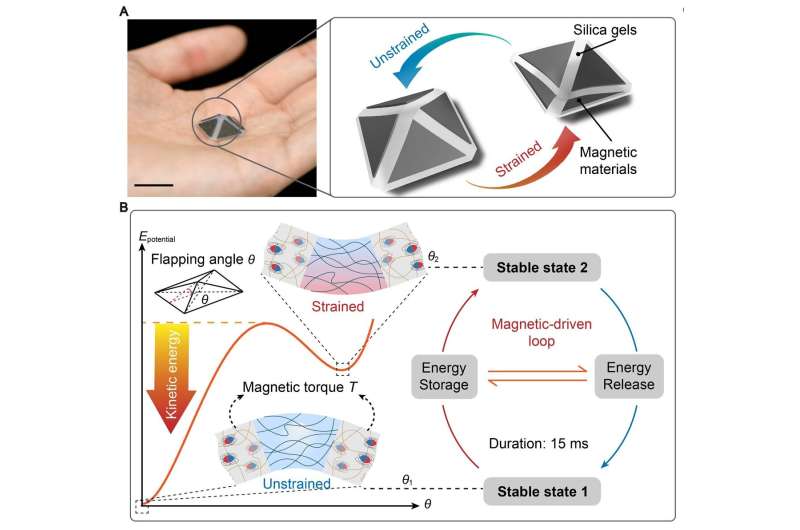Using elastic materials for durability, this design offers new possibilities for navigating complex terrains and confined environments.
Researchers from Zhejiang University in China have developed a new magnetically driven, bistable soft jumper that demonstrates advanced jumping capabilities. This robotic system can jump both higher and faster compared to previous models. Jumping robots have potential applications in navigating complex terrains and accessing hard-to-reach environments, but many existing designs lag behind natural organisms in both speed and height.
The new soft jumper uses elastic, deformable materials, which give it greater resistance to impact, minimizing damage during jumps. However, current soft robots often struggle with response times and takeoff speeds. The Zhejiang team’s jumper addresses these limitations, achieving takeoff speeds over 2 meters per second and response times under 15 milliseconds. It can jump more than 108 times its body height due to a bistable mechanism that quickly releases stored elastic energy. This bistable system allows the jumper to switch between two states in a loop, harnessing energy for each leap. The design enables the robot to perform two locomotion modes: jumping and hopping. Tests conducted in real-world conditions demonstrated its versatility. For example, the robot successfully navigated a pipeline with amphibious terrain, jumping through U-shaped structures and from underwater to the surface. These experiments simulated practical applications, such as cleaning water inside pipelines.

The team produced several prototype jumpers of different sizes and found that smaller versions were more affected by air resistance, limiting their jump height. Despite this, all models maintained similar takeoff velocities. The researchers also showed that the robot’s jumping height and distance could be adjusted by modifying the magnetic field’s duration and strength. The team mentions that in the future, this design could inspire new flexible robotic systems for a wide range of practical applications, particularly in environments that require navigating difficult terrain or confined spaces.






